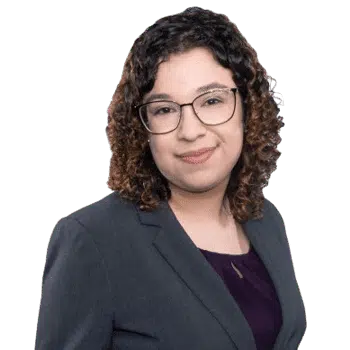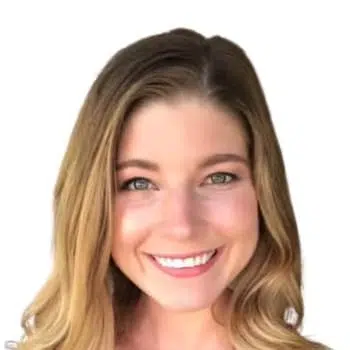Vicodin Addiction and Abuse in Ohio
Written by Melissa Carmona
& Medically Reviewed by Danielle Boland
Medically Reviewed
Last updated: 01/17/2023
Vicodin is a prescription pain medication combining the opioid hydrocodone with acetaminophen. Hydrocodone is one of the most prescribed pain medicines and one of the most abused drugs in the general population. The opioid in Vicodin makes it highly addictive, whether used by prescription or otherwise.
Vicodin Addiction
Hydrocodone is an opioid. Opioids are a class of drugs including other prescription pain relievers like oxycodone, morphine, fentanyl and codeine. It also includes heroin. All opioids are related to one another chemically and interact with opioid receptors. While opioid pain medications may be safe for short-term use when used as prescribed, they produce euphoria, which means there’s a potential for misuse. Dependence can occur, as can overdose and death.
An opiate or opioid like Vicodin travels to the brain, attaching to mu-opioid receptors. Then, there’s a triggering of the same brain processes that reward us with pleasure when we engage in basic life functions like sex and eating. When the reward pathway is activated by Vicodin, it motivates ongoing use. There’s a reinforcement by the brain to keep seeking out this pleasurable stimulus, leading to opioid addiction.
Signs of opioid abuse or addiction include:
- Seeking opioids from situations outside of a prescription
- Reporting lost or stolen medications
- Trying to get early refills
- Doctor-shopping
- Taking a substance for longer or in larger amounts than intended
- Being unsuccessful when trying to cut back or stop using opioids like Vicodin
- Spending a lot of time getting opioids, using them or recovering from them
- Experiencing strong urges to use or cravings
- Having problems at school, work or home
- Continuing to use opioids even with known related problems
- Withdrawing from work, school and social activities
- Using opioids in dangerous situations
- Developing a tolerance and needing larger amounts to get the desired effects
- Experiencing withdrawal symptoms
If you are struggling with Vicodin addiction, we are here for you.
Vicodin Addiction Treatment Program
Opioids are difficult to stop using on your own. When you stop using opioids like Vicodin, you’re likely to experience withdrawal symptoms. Vicodin addiction treatment should be evidence-based medical and therapeutic care administered by licensed professionals and tailored to the individual’s unique needs.
Vicodin Detox
When someone has an opioid use disorder (OUD), they may experience withdrawal symptoms as they stop using the drug they depend on. Medical detox may also include medication-assisted treatment (MAT) to help reduce withdrawal symptoms and cravings. In a medical detox program, clients receive 24/7 medical supervision and treatment for withdrawal symptoms to make the process as safe and comfortable as possible. Comfort and supervision during Vicodin detox can help ensure detox is successful and supports long-term recovery. includes behavioral treatments.
Vicodin Rehab
A detox program isn’t addiction treatment on its own. Instead, it’s one part of a multi-step process. Once someone completes Vicodin detox, they can begin an inpatient or outpatient rehab program.
Inpatient rehab is an intensive, high level of care where patients live onsite at the facility. Outpatient treatment involves living at home and visiting the facility for treatment, which allows the patient to continue with many of their daily responsibilities. Some patients will start with a higher level of care on an inpatient basis and then, as they’re ready, transition to outpatient rehab. The type of program that’s right for a person depends on:
- The severity of their Vicodin addiction
- Whether they’ve sought treatment before
- Insurance coverage
- How long they’ve been using opioids
- Whether they have co-occurring mental health disorders
- If they have a stable home environment that’s substance-free
Did you know?
Your insurance may cover the cost of rehab.
Treatment for Co-Occurring Disorders
Someone who has a substance use disorder is more at risk of developing another primary condition or chronic illness. When someone has a mental health disorder and a substance use disorder, these are known as co-occurring disorders. According to the 2018 National Survey on Drug Use and Health, around 9.2 million adults in the U.S. have a co-occurring disorder. Common co-occurring disorders with a substance use disorder, including Vicodin addiction, include:
- Mood disorders and anxiety
- Bipolar disorder
- Major depressive disorder
- Post-traumatic stress disorder (PTSD)
- Attention-deficit/hyperactivity disorder (ADHD)
- Schizophrenia
- Conduct disorders
Having two or more disorders can complicate treatment, but integrated approaches to care can help people achieve recovery. Integrated treatment for co-occurring disorders, called dual diagnosis care, can help someone end their substance use, improve their functioning, psychiatric symptoms, and quality of life.
Aftercare
When someone is in recovery from a substance use disorder, it’s not something that happens over a fixed period of time. Instead, it’s a continuous commitment. Once someone completes their initial treatment program and before they leave, they should be connected with resources, support groups and people who will help support ongoing recovery. An aftercare plan is tailored to the individual’s unique needs so they have the highest likelihood of maintaining success after rehab.
Vicodin Addiction Treatment Center in Columbus, OH
The Recovery Village Columbus Drug and Alcohol Rehab is a safe, comfortable place to begin your recovery journey. The facility is on 6.5 acres and creates a peaceful, tranquil atmosphere with amenities to encourage a healthy lifestyle. Comprehensive therapies and treatments are paired with recreational opportunities to support your holistic needs during this important time in your life. We offer a full continuum of care, including medical detox, inpatient rehab, outpatient drug treatment and online teletherapy.
Contact our helpful representatives to learn more about treatment, verify your insurance coverage and get started on your admission.
View Sources
Moore, Paul A., et al. “Why do we prescribe Vicodin?” The Journal of the American Dental Association, July 1, 2016. Accessed August 15, 2022.
NIH National Institute on Drug Abuse. “Opioids.” Accessed August 15, 2022.
Drug Enforcement Administration. “Hydrocodone.” October 2019. Accessed August 15, 2022.
Kosten, Thomas R. & George, Tony P. “The Neurobiology of Opioid Dependence: I[…]ations for Treatment.” Addiction Science & Clinical Practice, July 2022. Accessed August 15, 2022.
Substance Abuse and Mental Health Services Administration (SAMHSA). “Co-Occurring Disorders and Other Health Conditions.” April 21, 2022. Accessed August 15, 2022.
Substance Abuse and Mental Health Services Administration (SAMHSA). “The Case for Screening and Treatment of […]-Occurring Disorders.” June 27, 2022. Accessed August 15, 2022.


